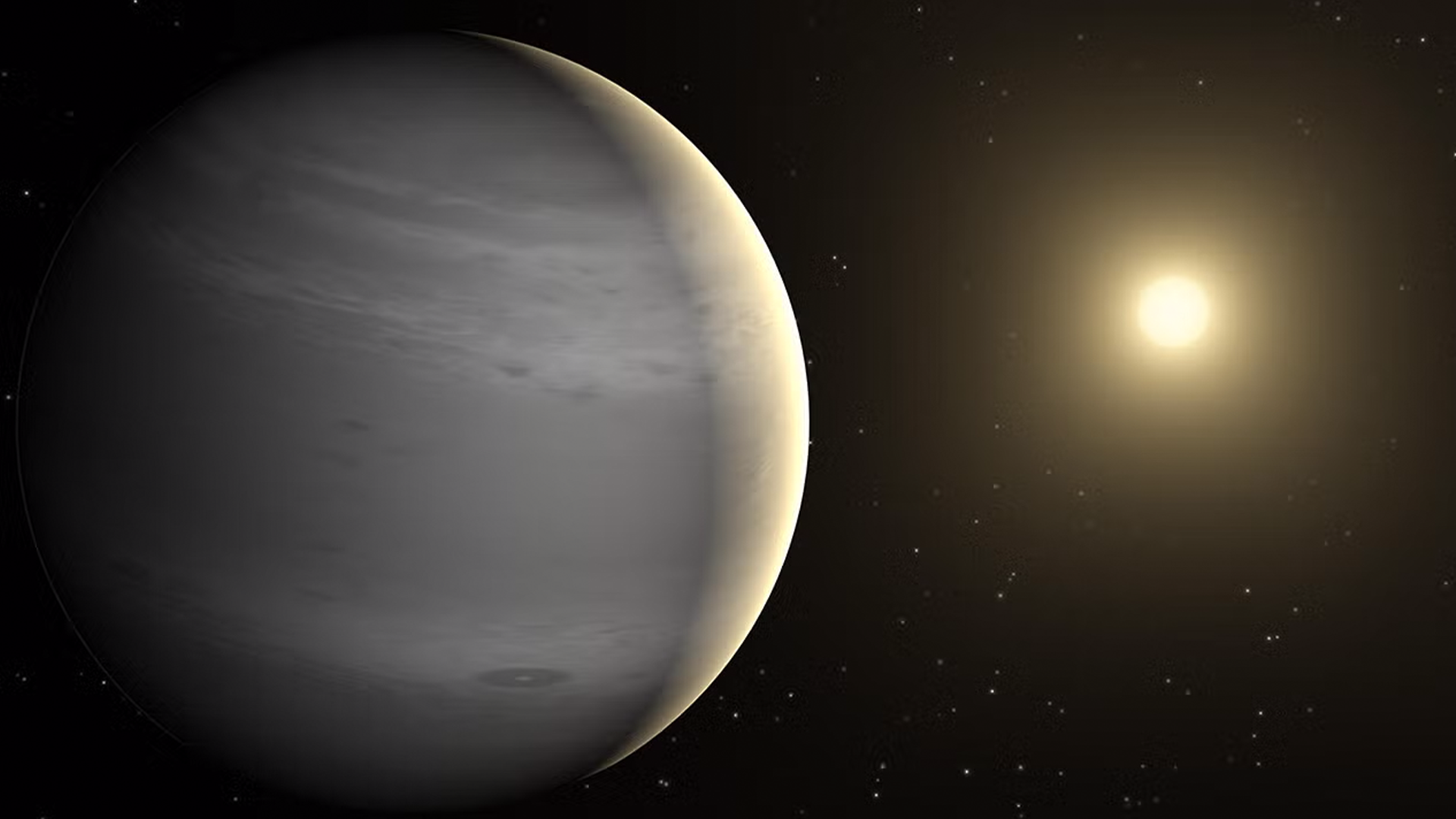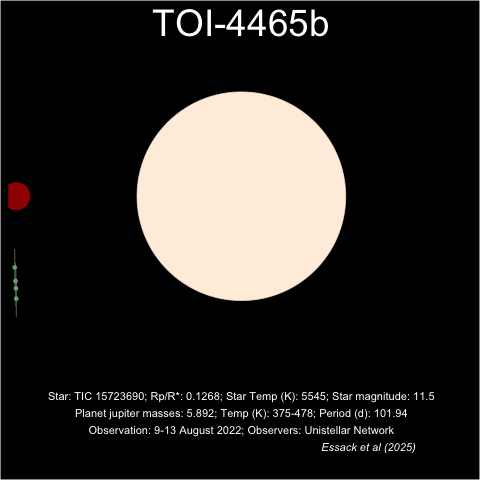Astronomers from The University of New Mexico, along with U.S. and international researchers, have confirmed the existence of a new giant exoplanet, made possible through a collaboration with citizen scientists around the world.
The discovery is detailed in a new paper published in The Astronomical Journal, with Postdoctoral Fellow and lead author Zahra Essack, Ph.D., and Assistant Professor Diana Dragomir as co-author.

The planet, TOI-4465 b, is a gas giant located approximately 400 light-years from Earth. It was first spotted by NASA's Transiting Exoplanet Survey Satellite (TESS) space telescope as a possible single-transit event — a brief moment when the planet passed in front of its star. As part of confirming the planet, the researchers needed to catch another transit, which only happens once every 102 days, or roughly three times per year.
"The observational windows are extremely limited. Each transit lasts about 12 hours, but it is incredibly rare to get 12 full hours of dark, clear skies in one location," explained Essack. "The difficulty of observing the transit is compounded by weather, telescope availability, and the need for continuous coverage."
To overcome these difficulties, the team launched a coordinated international campaign spanning 14 countries. The effort included 24 citizen scientists across 10 countries, who used their personal telescopes to help observe the next transit. Their contributions provided critical, time-sensitive observations that complemented data from professional observatories.

"The discovery and confirmation of TOI-4465 b not only expands our knowledge of planets in the far reaches of other star systems but also shows how passionate astronomy enthusiasts can play a direct role in frontier scientific research," said Essack. "It is a great example of the power of citizen science, teamwork, and the importance of global collaboration in astronomy."
In addition to the citizen scientists, professional astronomers — including students — contributed supporting photometric observations, which measured changes in the star's brightness as the planet passed in front of it, using established observatories.
Several key programs enabled this global effort, including the TESS Follow-up Observing Program Sub Group 1 (TFOP SG1), the Unistellar Citizen Science Network, and the TESS Single Transit Planet Candidate (TSTPC) Working Group.
"What makes this collaboration effective is the infrastructure behind it. The Unistellar network provides standardized equipment and data processing pipelines, enabling high-quality contributions from citizen scientists. TFOP SG1 offers a global coordination framework that connects professional and amateur astronomers and observational facilities. The TSTPC Working Group, led by Professor Dragomir, brings together the detection and follow-up expertise needed for these challenging observations," said Essack.

TOI-4465 b is a gas giant exoplanet about 25% larger in radius than Jupiter, nearly six times Jupiter's mass, and almost three times as dense. The planet has a mildly elliptical orbit, leading to a temperature range of 375–478 K (about 200–400°F). TOI-4465 b is a rare example of a giant planet that is large, massive, dense, and temperate, and occupies a relatively underexplored region in terms of planet size and mass.
Long-period giant planets like TOI-4465 b can serve as a bridge between the extreme hot Jupiter exoplanets, which orbit very close to their stars, and the cold gas giants in our own solar system.
"This discovery is important because long-period exoplanets (defined as having orbital periods longer than 100 days) are difficult to detect and confirm due to limited observational opportunities and resources. As a result, they are underrepresented in our current catalog of exoplanets," explained Essack. "Studying these long-period planets gives us insights into how planetary systems form and evolve under more moderate conditions."
TOI-4465 b's large size and cool temperatures make it a strong candidate for future atmospheric studies with telescopes like the James Webb Space Telescope (JWST). It ranks among the best long-period exoplanets available for emission spectroscopy studies, which could uncover key details about its atmosphere.
This research paper is the sixth installment from the Giant Outer Transiting Exoplanet Mass (GOT 'EM) survey. The GOT 'EM survey aims to characterize long-period transiting giant planets by measuring their radii and masses through coordinated follow-up observations (transits and radial velocities, respectively).
This research was funded through a three-year NASA TESS General Investigatory Program Key Project (Grant: 80NSSC22K0185).






